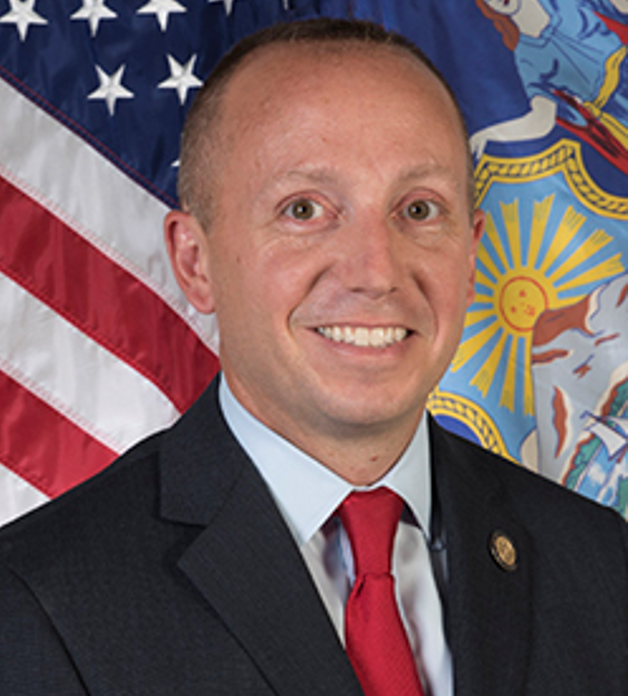How New York is Rebuilding Resilient Shoreline Communities
Northern New Yorkers well remember the summers of 2017 and 2019, when all-time-high water levels along the 680 miles of Lake Ontario and the St. Lawrence River shorelines severely damaged coastal infrastructure. For months, water, wind, and waves flooded homes and businesses, eroded bluffs, inundated roads, and washed-out wastewater infrastructure.
The pain in communities from this back-to-back devastation was real. I saw it in dozens of trips through the region. Whether we heard about experiences firsthand or as part of the State’s ongoing work on the ground, residents – shellshocked, standing in rubber boots, knee-deep in mud as they shoveled muck and soaked belongings out of living rooms – worked hard to recover. Business owners spoke passionately about salvaging damaged equipment while facing another lost tourist season.
All told, the high-water events cost the region’s economy tens of millions of dollars. This story of weather-driven devastation is not exclusive to Northern New York. It is being felt with increasing severity across the state and nation as we grapple with the effects of global climate change.
What was unique about these crises was the State’s response: the $300 million Lake Ontario Resiliency and Economic Development Initiative, known as “REDI.” I was proud to help lead this initiative under Governor Kathy Hochul, along with 12 of our fellow commissioners and their agencies.
REDI serves as a template for future responses. The forward-thinking initiative provided shoreline communities in eight counties a critical path forward at a time when municipalities, residents, and businesses from Youngstown to Waddington contemplated how to rebuild. The formula was simple: rebuild with “resiliency” and “economic development” as core principles. The State provided critical resources and expertise, local officials and stakeholders identified priority projects, and together state and local governments are working cohesively from project engineering to construction.
We are not just building back but rebuilding with designs that reflect the new normal and embrace natural shorelines. That is REDI.
Today, the partnerships are paying off, with 41 critical infrastructure projects complete, 33 under construction, and 60 in final design. Thriving communities are making a comeback because natural resilience and burgeoning economic development are returning to these shoreline communities in ways not seen in generations.
Take the village of Clayton and the State’s $8.6 million investment in reconstructed docks, wastewater systems, and a new elevated Riverwalk and rebuilt docks, all of which will protect critical tourist amenities.
In Ogdensburg, fortified shorelines, elevated walking trails, and a public viewing deck at the historic Fort de la Presentation will ensure the popular site remains open, accessible, and protected from flooding.
In Oswego, the State is investing $2.3 million to ensure that this leading international port remains open and operational for the one million tons of cargo that passes through on an annual basis. Resiliency measures undertaken there include stabilization of the shoreline, the installation of a new floating dock system, and the repair and re-armoring of pier walls.
In Lyme, the State’s $5.4 million investment is protecting residents’ access to emergency care during storms by raising vulnerable sections of roadway and providing wind, wave, and ice protection on Point Peninsula.
Communities are boasting environmental and economic successes of their own. In Niagara County, a massive $14 million restoration reclaimed Olcott Harbor for boaters, anglers, and other visitors. A new boutique hotel in development as part of a separate project nearby was attracted by the REDI-led waterfront renewal underway.
In Irondequoit Bay, new wastewater infrastructure now captures and treats sewage and stormwater during extreme weather. And, at Sodus Point Beach, restoration work earned a designation as one of the nation’s Top 10 beach restorations in 2022 by the American Shore and Beach Preservation Association.
Over the last three years, New York State also helped repair and fortify hundreds of impacted homes and businesses along the damaged shoreline. Our dredging initiative deepened 20 harbors, ensuring that they remain navigable cornerstones of the region’s economy.
REDI projects aren’t hasty, short-term fixes. They provide durable, scientifically informed solutions for residents, tourists, and entrepreneurs, all of whom depend on a safe, vibrant, and healthy waterfront. Each project represents a collaborative, all-hands-on-deck partnership between state and local governments that serves as a model for how New York and other states must continue to work in the face of climate change’s ongoing threats.
In the years to come, we know that REDI will be measured by the millions of dollars it saved New Yorkers in future flood responses, by families able to stay in their homes, and by the businesses that remain open despite tumultuous waves and rising water. With many of the REDI projects already completed, with more on the way, we are sending a resounding message that we will be there to partner side-by-side with communities and government at every level to help residents in need when they need it.
The impacts of climate change on New York will only increase in the years ahead. New York will be well-positioned to meet this monumental challenge thanks to incredible investments in the environment being made by Governor Hochul and the unique state-local partnership model established by the REDI initiative.
Basil Seggos is the Commissioner of the New York State Department of Environmental Conservation and Co-Chair of the State’s Climate Action Council

